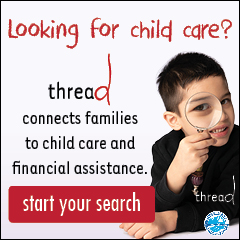Be my neighbor: Helping kids connect to their community
By Malia Jacobson
Neighborhoods – and connections within local communities – matter. Per research, where children live, play and attend school impacts everything from how much they exercise to their grades. Studies also show that “social embeddedness,” or a strong connection to the social and cultural relationships within the neighborhood, can boost kids’ social, emotional and academic outcomes. Like growing a garden, cultivating a richly connected neighborhood takes time and effort, but families can reap rewards for years. Here’s how to create social connectedness in your corner of the world.
Early Years 0-5
Neighborhood knowledge. Creating a connected community starts with getting to know your neighborhood and your neighbors, says Catherine Bagwell, professor of psychology at Oxford College of Emory University. “One of the most important ways to foster relationships with neighbors is to create opportunities for children to have frequent, positive contact and interactions with them,” she says. Often, this simply means playing outdoors, from riding bikes and scooters in the driveway to spending time at a local park. Investing in your own sports and play gear, like a simple soccer goal or basketball hoop, can attract neighborhood kids to your yard.
Help kids get to know their area by creating a scavenger hunt that includes specific neighborhood landmarks, and ask other kids on the block to participate. Young children are usually generous and enthusiastic about giving; bringing neighbors baked goods or a hand-picked bouquet of backyard flowers can help facilitate introductions and build friendships over time.
School Years 6-12
Safe spots. Remember long hours spent roaming your childhood neighborhood? Many adults do, but kids today don’t get nearly as much unsupervised outdoor time as their parents did, mainly because of concerns about safety. When neighborhoods are viewed as less safe, kids spend more time inside, get less exercise, and are less connected to their communities, according to research. Helping kids feel safer in their community fosters a healthier, more balanced perspective to counteract the sometimes-scary world depicted by news reports.
Families concerned about neighborhood safety can establish guidelines for outdoor play, like checking in with parents every hour or always coming home by nightfall, and explore community centers where kids can play with their peers a more supervised setting. Devices like the GizmoGadget, GizmoPal, or Tinitell GPS watches provide GPS tracking and basic phone service to give parents peace of mind while kids enjoy “free range” neighborhood play.
Teen Years 13-18
Grass roots. By the teen years, kids may be too involved in school and extracurricular pursuits to spend much time on unstructured, run-around-the-neighborhood play. But for entrepreneurial teens, or any kids motivated by earning some extra cash, starting a neighborhood business can build community connections along with independence, social skills and earning power.
A quick look around the neighborhood can help teens determine which type of business might flourish – are there lots of lawns in need of care? Young families who need babysitting? Professionals who travel and need pet or house-sitting? Or would a car-washing or dog-walking business work best? Handing out business cards or flyers around the neighborhood helps teens make face-to-face connections with people in their immediate area. Meeting the neighbors and earning money are the immediate benefits, but learning about neighborhood needs and figuring out a way to fill them is an exercise with long-term learning value.










